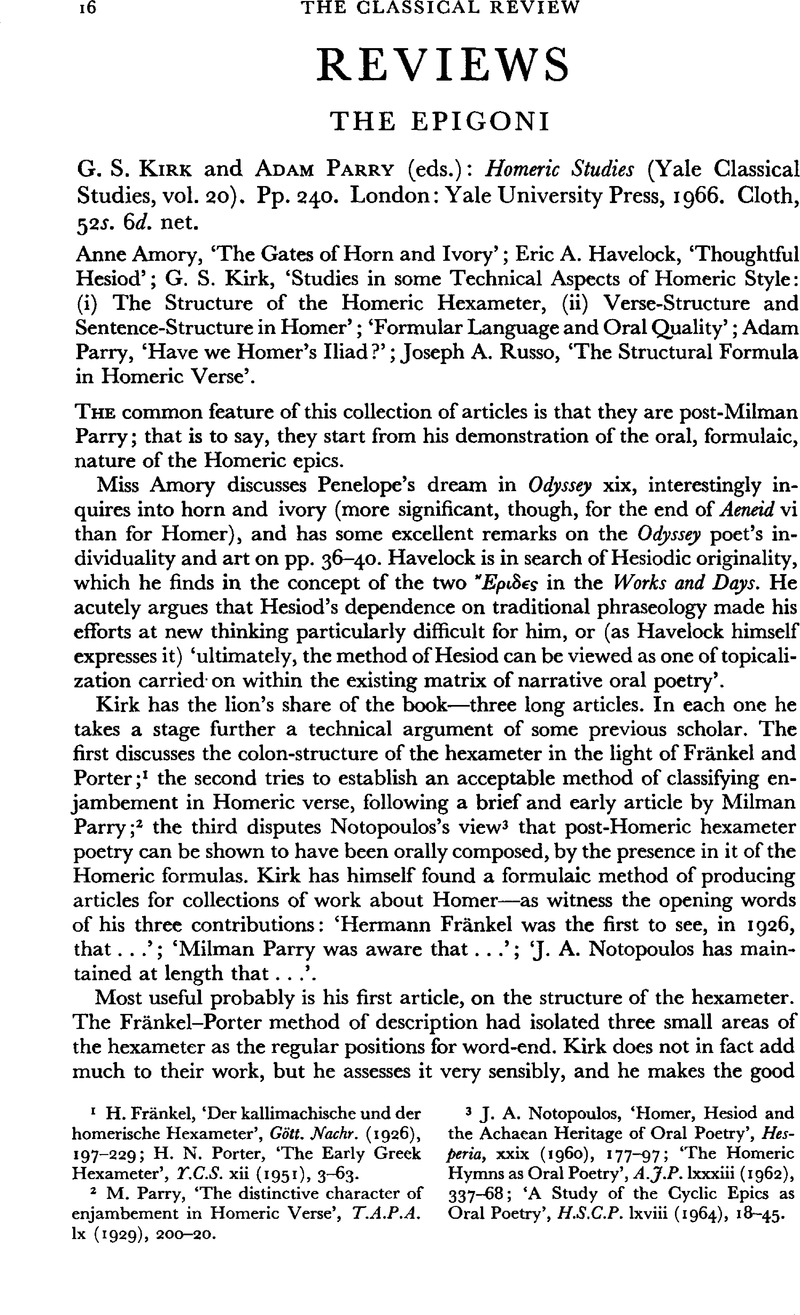No CrossRef data available.
Article contents
The Epigoni - G. S. Kirk and Adam Parry (eds.): Homeric Studies (Yale Classical Studies, vol. 20). Pp. 240. London: Yale University Press, 1966. Cloth, 52s. 6d. net.
Published online by Cambridge University Press: 27 February 2009
Abstract

- Type
- Reviews
- Information
- Copyright
- Copyright © The Classical Association 1969
References
1 Fränkel, H., ‘Der kallimachische und der homerische Hexameter’, Gött. Nachr. (1926), 197–229Google Scholar; Porter, H. N., ‘The Early Greek Hexameter’, Y.C.S. xii (1951), 3–63.Google Scholar
2 Parry, M., ‘The distinctive character of enjambement in Homeric Verse’, T.A.P.A. lx (1929), 200–220.Google Scholar
3 Notopoulos, J. A., ‘Homer, Hesiod and the Achaean Heritage of Oral Poetry’, Hesperia, xxix (1960), 177–197CrossRefGoogle Scholar; ‘The Homeric Hymns as Oral Poetry’, A.J.P. lxxxiii (1962), 337–68; ‘A Study of the Cyclic Epics as Oral Poetry’, H.S.C.P. lxviii (1964), 18–45.


